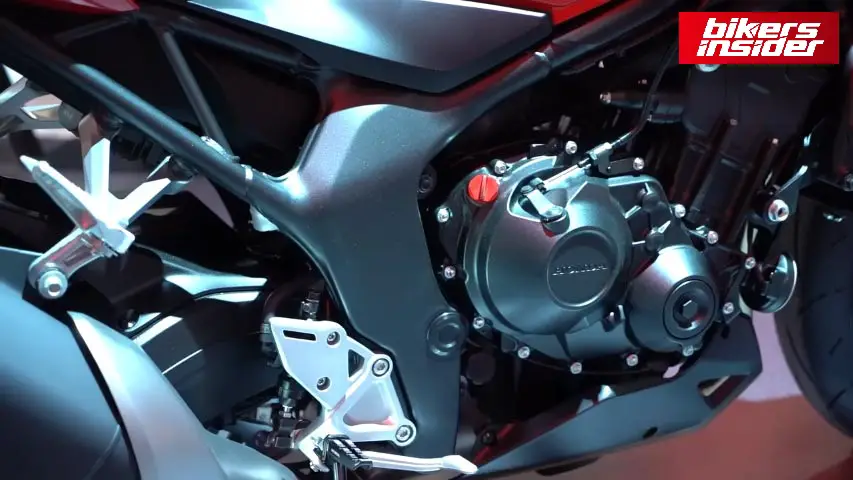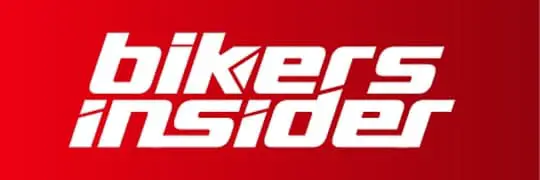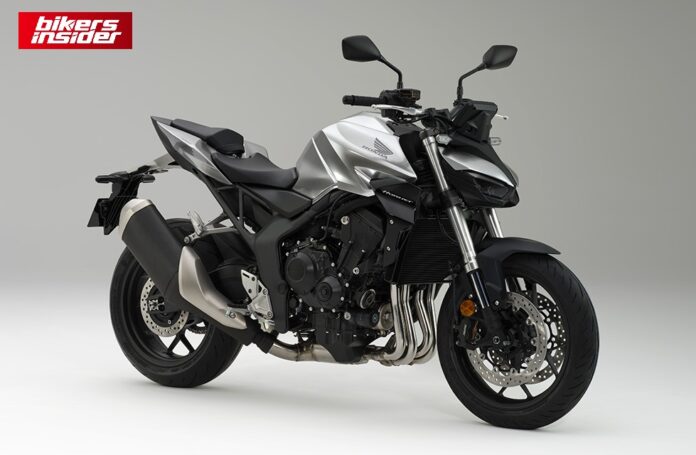All we know is that the Honda CB1000 Hornet will be available later in 2024, with over 148 horsepower and more than 74 pound-feet of torque from an engine based on the 2017 CBR1000RR Fireblade. If that implies, it will most certainly outperform the current Honda CB1000R, but it will also be less expensive, foregoing frills like the single-sided swingarm and choosing a more modern styling over the R’s ‘neo-retro’ appearance.
Potential air-intake issue
Getting a smooth flow of cool, high-pressure air into a bike’s airbox has always been an easy win when it comes to increasing performance, as proven by the ubiquitous ram-air intakes on the noses of superbikes, but it’s difficult on a naked without elaborate ducts that can detract from the design.
The Hornet’s answer is to mount those intakes behind the upper portions of the forks, one on each side of the steering stem, and feed the air via the gap between the upper and lower rails of the tubular chassis and directly into the airbox. The small headlamp cowl, which smoothes airflow in front of the fork legs, works in tandem with the forward-jutting panels attached to each side of the fuel tank to draw air into the intakes.

It’s a solution that checks the simplicity box but isn’t without flaws, which is where Honda’s patent application comes in. While the intake design is to bring air into the engine, aided by the bike’s bodywork, there are two major issues.
The first is that once the air has been wrangled from the bike’s nose and around the forks, it gets turbulent as it is directed toward the intakes. The second is that the air feeds directly back and downwards into the airbox; this is a direct route, but it means that rain or spray could get in and soak the air filter.
Honda’s innovative solution to the problem for CB1000 Hornet
Honda‘s solution to both issues is the installation of three louvers across the intakes, tilted down at the front and up at the back.
These serve a dual purpose of straightening the chaotic airflow before it enters the airbox and deflecting rainwater down and away from the intakes, so eliminating the two major flaws of the intake’s orientation without adding much cost or complexity.
The design also comes with a bonus. By placing the intake ports slightly below the top yoke, the rider may better hear the engine’s intake sound (while keeping total noise levels low).
Yamaha has also concentrated on directing intake sound to the rider on the MT-09, employing a series of chambers between the airbox and the top of the tank, but it is a much more sophisticated design that must also find a method to keep the rain out.


